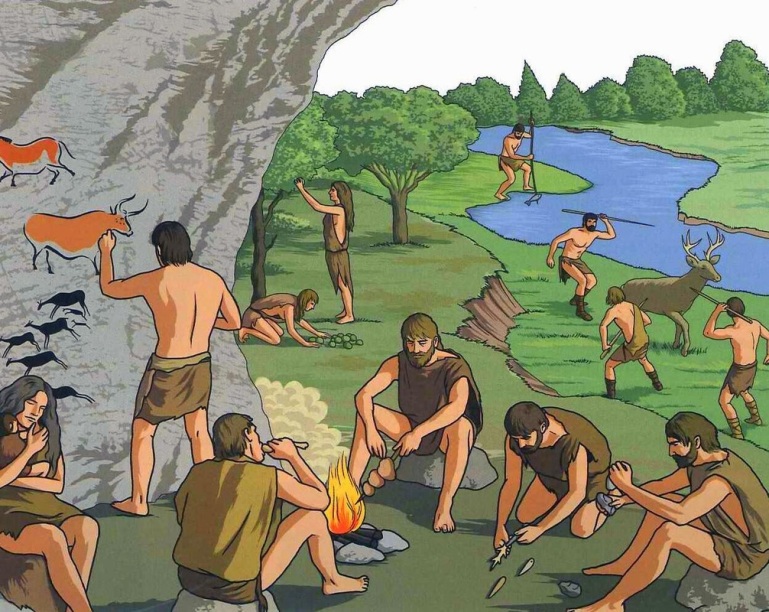
Prehistory y is the first historic period that are we going to research about. Here you have a small summary in English and in Spanish.
Prehistory is the longest period of the History It is around the 99% of the time that humans have been on Earth. It begins with the emergence of the genus Homo in Africa about 3.3 million years ago. In the Iberian Peninsula, the arrival of the first hominids dates back 1.5 million years ago. The oldest fossil remains have been found in the Atapuerca deposit. In this deposit, scientist have found all the species of hominids that lived in Europe, dating back to 1.4 million years ago.
In dividing up human prehistory in Eurasia, historians typically divide it into consecutive time periods, named for their respective predominant tool-making technologies: Stone Age (divided into Paleolithic and Neolithic), and the Metal Ages (in which we can differenciate Cooper Age, Bronze Age and Iron Age).
The Stone Age
The Stone Age is divided into Paleolithic («Old Stone Age») and Neolithic («New Stone Age»).
Paleolithic
In the Paleolithic, the human lived in tribes in caves, huts or int he open field. They share jobs as hunting animals, fishing and collecting wild fruits and vegetales. For these jobs they create simple tools with bones as stones. With bones they were able to get harppons for fishing or needles for creating clothes. for the stones they were able bit hitting them to create arrowheads, knives or axes.
One of the main events for humanity in the paleolithic period is the discovery of fire, which allowed them to cook the food. Also they have left their marks on the walls of the caves where they lived. Many examples of cave paintings have been fopund, specially in southern France and northern Spain.
Neolithic
Metal Ages
Puedes comprobar todo lo que has aprendido con este test: TEST SOBRE LA PREHISTORIA.
aquí puedes descargarte los mapas conceptuales de la prehistoria

